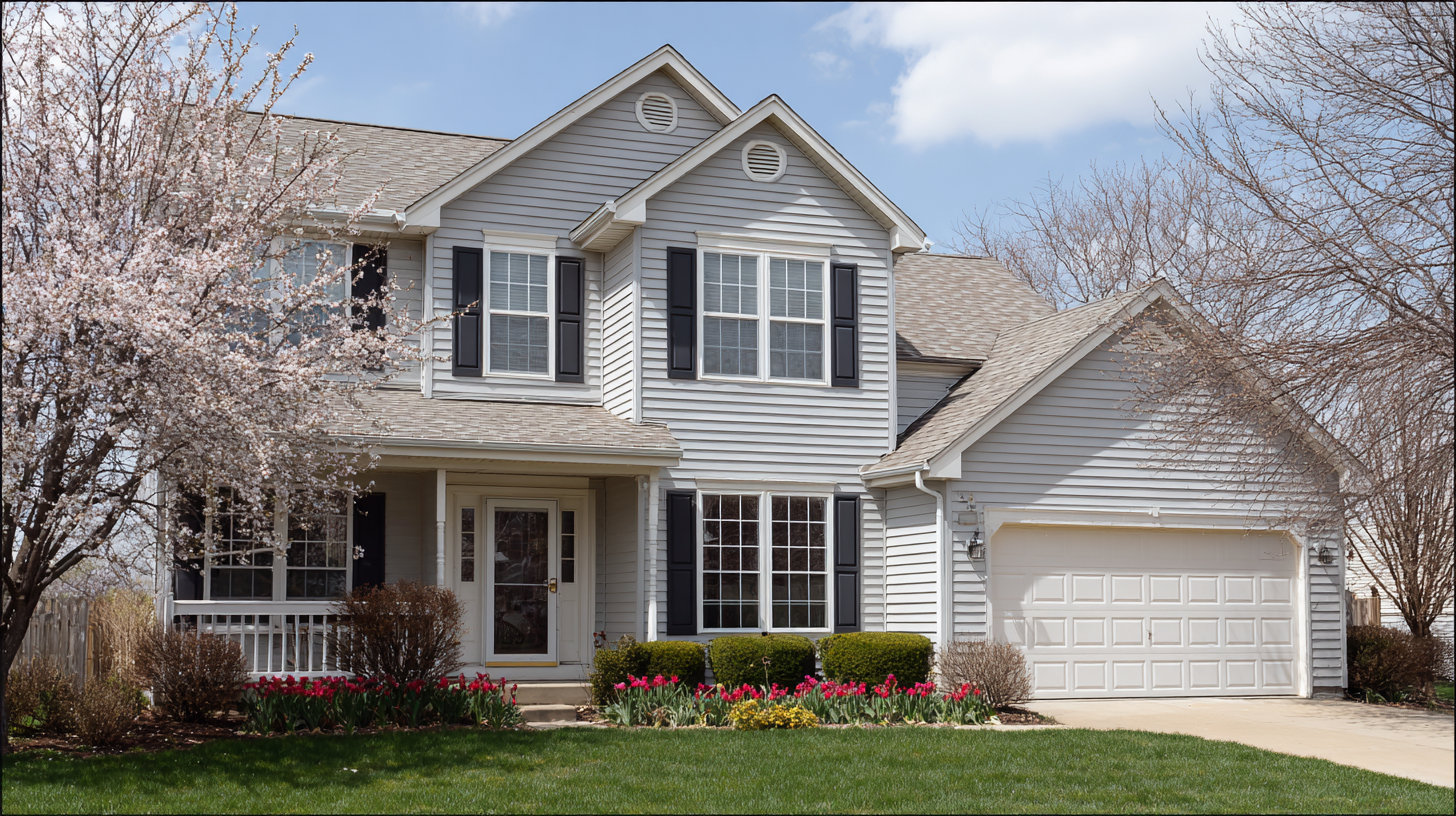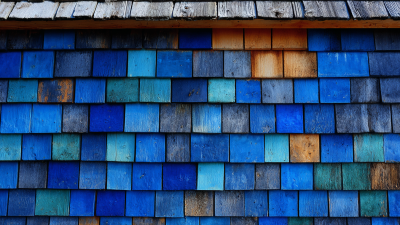How to Choose the Best Vinyl Siding Options for Your Home Exterior
 Choosing the best vinyl siding options for your home exterior can significantly impact both the aesthetic appeal and energy efficiency of your residence. According to the latest report by the Vinyl Siding Institute, vinyl siding holds a commanding 28% share of the residential siding market, highlighting its popularity and reliability among homeowners. As industry expert Mark P. Johnson, a veteran in home improvement technologies, states, “Selecting the right vinyl siding options not only enhances the beauty of your home but also contributes to its long-term value and sustainability.”
Choosing the best vinyl siding options for your home exterior can significantly impact both the aesthetic appeal and energy efficiency of your residence. According to the latest report by the Vinyl Siding Institute, vinyl siding holds a commanding 28% share of the residential siding market, highlighting its popularity and reliability among homeowners. As industry expert Mark P. Johnson, a veteran in home improvement technologies, states, “Selecting the right vinyl siding options not only enhances the beauty of your home but also contributes to its long-term value and sustainability.”
With a myriad of choices available, from colors and textures to styles and insulation properties, finding the ideal vinyl siding option can be a daunting task. Homeowners are increasingly opting for vinyl due to its low maintenance requirements and durability, with studies indicating that properly installed vinyl siding can last over 30 years. Furthermore, it offers excellent insulation potential, which can lead to energy savings and reduced utility bills—a critical consideration in today's environmentally conscious market. As we delve deeper into the best vinyl siding options for 2025, understanding the features and benefits of each choice will empower homeowners to make informed decisions that enhance their home’s exterior.
Understanding Different Types of Vinyl Siding Materials for 2025
When selecting vinyl siding for your home in 2025, understanding the different types of materials available is crucial. Vinyl siding comes in various styles and finishes, offering an array of choices that cater to different aesthetic preferences and budgets. From traditional lap siding to innovative vertical options, each style can dramatically influence the overall look of your exterior. For homeowners seeking the charm of modern farmhouse design, selecting textures that mimic wood or stone can enhance curb appeal while providing the durability and low maintenance that vinyl is known for.
Cost is also a significant factor when considering vinyl siding options. The price range can vary widely, typically falling between $7,000 and $25,000 for a complete replacement. Factors such as the type of siding chosen, the size of the home, and location can greatly affect the final cost. While higher-end options may offer superior aesthetics and longevity, there are plenty of budget-friendly choices that still provide excellent performance. Therefore, it’s vital to carefully weigh the styles, materials, and associated costs to find the right fit for your home improvement project in 2025.

Evaluating Color Options to Enhance Your Home's Curb Appeal
When selecting vinyl siding for your home, color plays a crucial role in enhancing curb appeal. The right color can transform your home's exterior, reflecting your personal style while also harmonizing with the surrounding environment. It’s important to consider both the architectural style of your home and the aesthetic you wish to achieve. For example, a classic colonial home may benefit from traditional colors such as soft whites or muted pastels, while a contemporary house might shine with bold or dark shades.
Additionally, evaluating the color options should involve assessing how they interact with other elements of your home. Take into account the color of your roof, trim, and landscaping; these factors will influence how well the siding color will stand out or blend in. Light colors can create an inviting atmosphere, while darker hues can provide a sophisticated appearance. It’s also wise to view color samples in different lighting conditions to see how they will look throughout the day. Making a thoughtful choice will not only boost your home’s curb appeal but also increase its overall value.
Comparative Analysis of Vinyl Siding Costs and Durability
When considering vinyl siding for your home exterior, one of the most critical factors is a comparative analysis of costs and durability. Vinyl siding comes in a range of prices, influenced by brand, thickness, and style. Higher-quality vinyl can initially cost more; however, it often proves more cost-effective in the long run due to its durability and lower maintenance needs. Opting for a premium grade can mean higher upfront costs but offers better resistance to fading, cracking, and weather damage.
Tip: When budgeting for your siding, be sure to account for potential long-term savings on repairs and maintenance. Investing in a quality product may reduce your expenses over time.
Durability is paramount when selecting vinyl siding. Cheaper options may appear attractive initially but could lead to higher expenses due to frequent replacements or repairs. Look for brands that offer warranties of at least 25 years, which may indicate a higher durability standard. Pay attention to the material thickness as well; thicker siding typically provides better insulation and resistance to impact.
Tip: Always read customer reviews and seek advice from professionals to ensure you choose a durable option that aligns with your budget and aesthetic preferences.
Comparative Analysis of Vinyl Siding Costs and Durability
| Vinyl Siding Type | Cost per Square Foot | Durability Rating (Years) | Maintenance Level | Energy Efficiency Rating |
|---|---|---|---|---|
| Standard Vinyl | $2.50 | 20 | Low | Standard |
| Insulated Vinyl | $3.50 | 30 | Medium | High |
| Vinyl Shake | $4.00 | 25 | Medium | Standard |
| Premium Vinyl | $5.00 | 40 | Low | Very High |
| Vinyl Board and Batten | $4.50 | 35 | Medium | High |
Factors to Consider for Climate-Suitable Vinyl Siding Choices
When selecting vinyl siding for your home, it's crucial to consider the climate in your area. Different vinyl siding materials function optimally under specific weather conditions. For instance, in regions with high humidity, look for products that have moisture-resistant qualities to prevent mold and mildew growth. In colder climates, choose siding with good insulation properties to keep your home warm and energy-efficient during harsh winters.
**Tips:** Opt for vinyl siding with UV protection if you live in sunny areas. This will help maintain the color integrity and extend the life of your siding. Additionally, consider the thickness of the vinyl; thicker options tend to withstand wind and impact better, making them ideal for locations prone to severe weather.
Another critical factor is the installation process, which can affect the performance of your siding. Ensure that the chosen vinyl siding is compatible with your local installation practices, especially in regions with heavy snowfall or strong winds. Proper installation can enhance the durability and effectiveness of your siding in confronting extreme weather conditions.
Climate-Suitable Vinyl Siding Options
Installation Methods and Maintenance Tips for Long-lasting Vinyl Siding
When installing vinyl siding, choosing the right method is crucial for ensuring durability and a sleek appearance. There are two primary installation methods: vertical and horizontal. Horizontal siding is more common and allows for quick installation, while vertical siding can create a unique look, emphasizing height. Proper preparation is essential; ensure that the surface is clean, flat, and dry before installation. Additionally, using quality materials, like moisture barriers and insulating underlayment, can enhance the overall performance of your siding.

Maintenance is key to prolonging the life of your vinyl siding. Regular cleaning with a mixture of water and mild detergent will prevent dirt and mildew buildup. It's advisable to inspect the siding annually for any damage or loose panels, especially after severe weather. If you notice fading or discoloration, a gentle power wash can revitalize its appearance. For minor repairs, replacement panels can easily be integrated, maintaining the aesthetic integrity of your home exterior. Following these installation and maintenance tips will help you enjoy the benefits of vinyl siding for many years.
Related Posts
-

Transform Your Home with Stunning Board and Batten Vinyl Siding Design Ideas
-

How to Choose the Best Vinyl Shake Siding for Your Home in 2025
-

Enhancing Your Living Space: The Benefits of Installing a Sliding Back Door
-

The Ultimate Guide to Choosing the Best Vinyl Sliding Doors for Your Home
-

How to Choose the Best Shingle Siding for Your Home Based on Durability and Cost
-

The Ultimate Guide to Choosing Vinyl Shake Siding for Your Home Renovation Project

